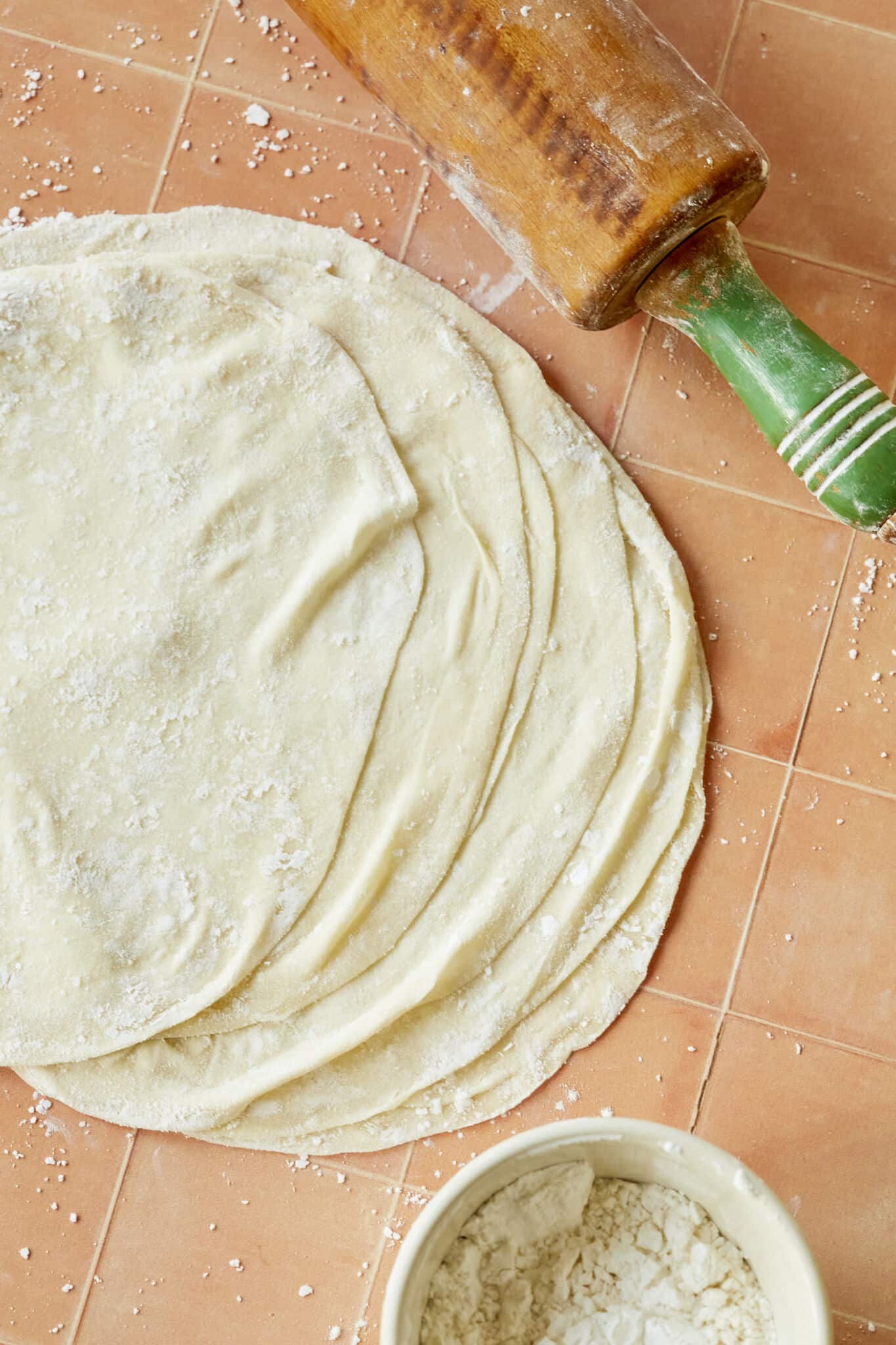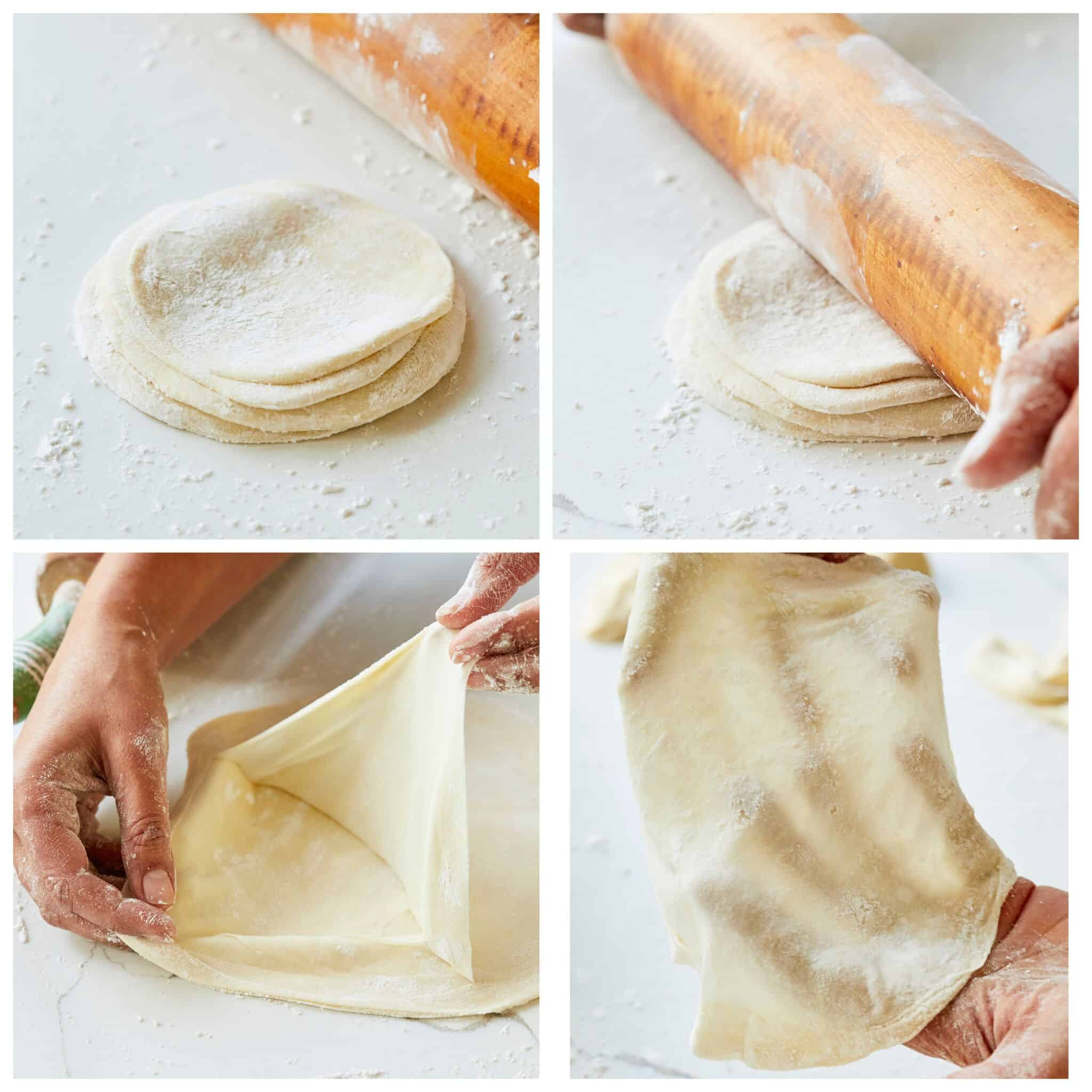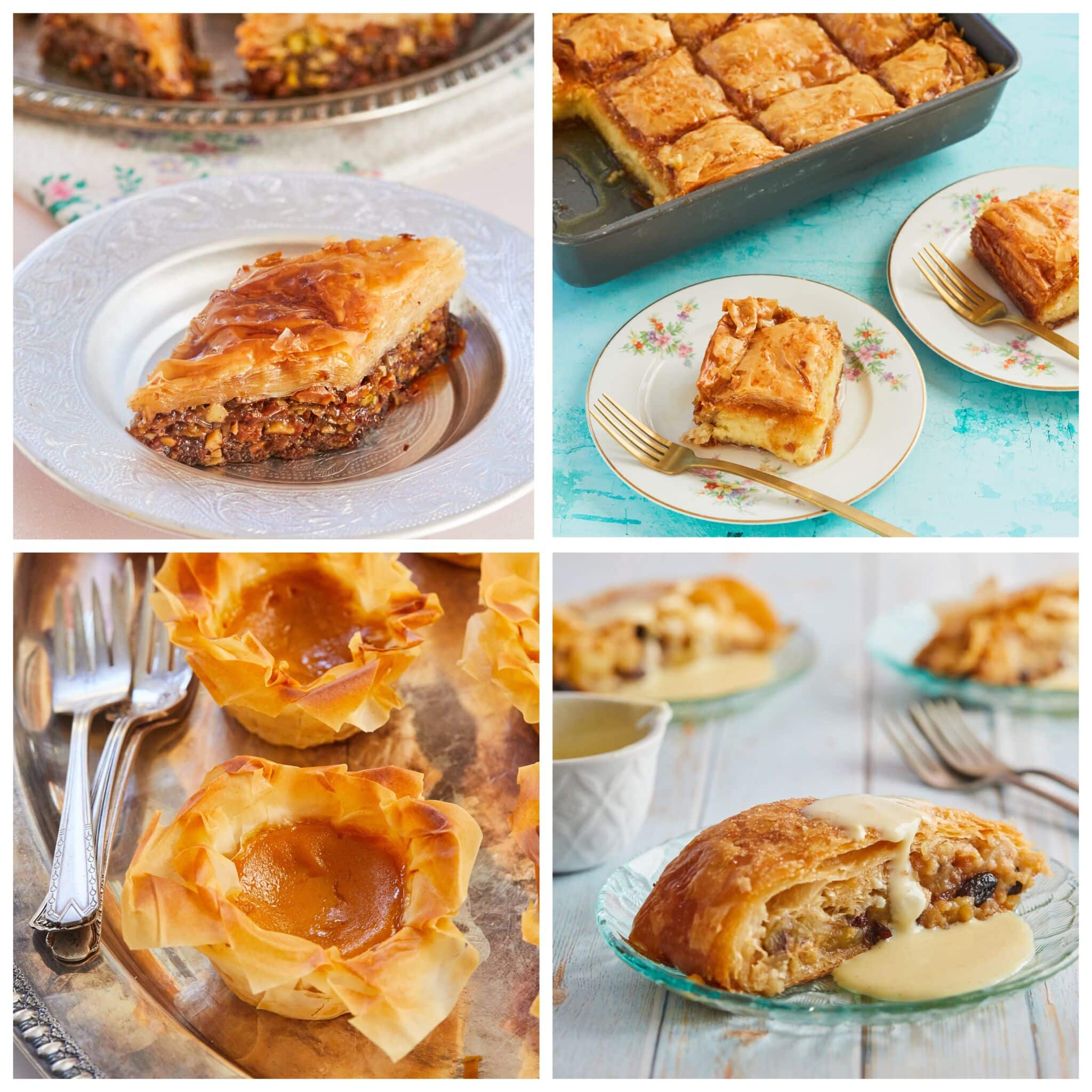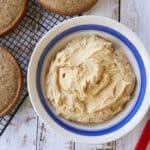Hi Bold Bakers! WHY YOU’LL LOVE THIS RECIPE: This Homemade Phyllo Dough Recipe unfolds the magic of crafting your filo pastry from scratch, promising the same exquisite taste and delicate texture as store-bought counterparts, all achieved through surprisingly easy methods. Already have an account? Followed by my Easiest No Knead Baguette Recipe, Phyllo dough is absolutely another long-awaited fundamental to diversify your culinary repertoire. Moreover, this bold baking basic will also elevate your baking expertise. After extensive research and immersive practice, I’ve uncovered a simplified technique to assist you in effortlessly nailing the same. Even when filo pastry is hard to come by, feel no more intimidated creating homemade phyllo dough for my Baklava, Quick and Easy Spanakopita Recipe, Greek Galaktoboureko, Petite Pumpkin Pies, and Perfect Traditional Apple Strudel Recipe!
Table of Contents
What is Phyllo Dough (Filo Pastry)?
Phyllo dough, also known as filo pastry, is a thin unleavened dough used for making pastries in various cuisines.
It is made by rolling and stretching the dough until it becomes extremely thin. It is typically layered with melted oil or butter between each sheet to deliver a flaky and crisp texture when baked. The word “phyllo” comes from the Greek language, meaning “leaf”. The dough is traditionally associated with Greek and Turkish cuisines but is also used in many other Mediterranean dishes and Middle Eastern dishes. The resulting pastry is versatile and can be used for both sweet and savory dishes, such as Baklava, Quick and Easy Spanakopita, Greek Galaktoboureko, Petite Pumpkin Pies, and Perfect Traditional Apple Strudel Recipe.
Tools for Homemade Phyllo Dough (Filo Pastry)
Measuring cups and measuring spoons Measuring jugs Glass mixing bowls Wire whisk Knife Rolling pin Parchment paper Cling wrap
Key Ingredients for Homemade Phyllo Dough (Filo Pastry) and Why
How to Make Phyllo Dough (Filo Pastry)
How to Store Phyllo Dough (Filo Pastry)
Store filo pastry well-wrapped in the refrigerator for up to 2 days, until ready to use. It can also be frozen for up to 4 weeks.
Can I Make Gluten-Free Phyllo Dough?
Yes, using an alternative gluten-free flour blend with psyllium husk, xanthan gum, or tapioca starch can create a gluten-free option.
Can I Make Phyllo Dough With Whole Wheat Flour?
Yes, you can substitute whole wheat flour for up to 50% bread flour, but the flavor will be nuttier and the texture will be slightly denser and coarser.
How do I prevent phyllo dough from drying out during the process? Cover it with a damp cloth or plastic wrap during rolling to keep it moist. Can I use a stand mixer to make filo pastry? While possible, hand-mixing filo pastry is often recommended for better control. Take care to avoid over-mixing if you choose to use a stand mixer. In a stand mixer fitted with a dough hook, add the olive oil and mix on low for 2 minutes, then add the remaining ingredients and mix on low for another 5 minutes, adding a touch of flour if the dough is too sticky to handle. Can I use butter instead of oil for filo pastry?
Yes, you can use butter to make filo pastry.
When substituting butter for oil, you’ll need to use melted butter in the same way as you would with oil in the recipe. Keep in mind that using butter may impart a slightly different taste and texture, but it can result in a delicious and flaky pastry. Can I add herbs or spices to phyllo dough for flavor? Yes, adding herbs or spices can enhance the flavor of filo pastry. How do I reheat dishes made with phyllo dough without losing crispiness?
Reheat filo pastry dishes in the oven at a low temperature to maintain crispiness.
A temperature range of 300°F(150°C) to 350°F (180°C) is suitable for reheating. Place the pastries in a preheated oven and monitor closely to achieve the desired warmth without compromising the texture. Reheating time can vary depending on the size and thickness of the pastries, so check periodically to avoid overheating. Can I make phyllo dough in a humid environment? Making filo pastry is challenging but possible in a humid environment. Note to dust with extra flour when necessary. What’s the difference between phyllo dough and puff pastry? Both filo pastry and puff pastry contribute flakiness to dishes. They differ in their composition and preparation: Phyllo dough contains oil and vinegar which are not used in puff pastry in most recipes. Phyllo dough achieves its texture through thin layers of phyllo, while puff pastry relies on the laminated structure created by layers of butter and dough.
Gemma’s Pro Chef Tips
Bread flour is ideal for this dough. However, you will also have success with all-purpose flour if that is all you get on hand. You can use any kind of vinegar for this dough, such as apple cider vinegar and wine vinegar. Be sure to flour the dough well with your cornflour mixture when rolling, especially if you live in a humid environment! To prevent a soggy bottom in dishes made with phyllo dough, you can blind-bake the phyllo dough for a few minutes before adding wet fillings to prevent sogginess. Roll the sheets of dough as evenly as possible. Sometimes the center can end up being thinner than the edges so this might take some practice. You got this!
More Bold Baking Basics
Perfect Homemade Pie Crust Easiest Puff Pastry Pâte Sucrée Recipe (French Sweet Shortcrust Pastry) Choux Pastry Danish Pastry Dough







